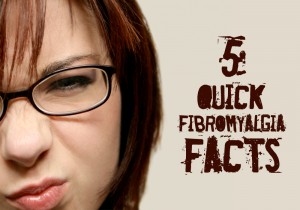5 Quick Fibromyalgia Facts
 3 to 5 percent of the general population are affected by fibromyalgia(1)
3 to 5 percent of the general population are affected by fibromyalgia(1)
Scientists estimate that fibromyalgia affects 5 million Americans 18 or older. (a)
Occurs in people of all ages, even children. More women are diagnosed with fibromyalgia, Although Men develop too.
Between 80 and 90 percent of people diagnosed with fibromyalgia are women. However, men and children also can have the disorder. Most people are diagnosed during middle age. (a)
Symptoms are chronic but may fluctuate throughout the day
A person may have two or more coexisting chronic pain conditions. Such conditions can include chronic fatigue syndrome, endometriosis, fibromyalgia, inflammatory bowel disease, interstitial cystitis, temporomandibular joint dysfunction, and vulvodynia. It is not known whether these disorders share a common cause. (a)
Roughly one-quarter of people with fibromyalgia are work-disabled(2)
Many people with fibromyalgia continue to work full or part time. However chronic pain and fatigue often make working very hard.
Three drugs are FDA-approved for fibromyalgia treatment
1. Lyrica
2. Cymbalta
3. Savella
People with fibromyalgia have typically turned to pain medicines, antidepressants, muscle relaxants, and sleep medicines. In June 2007, Lyrica (pregabalin) became the first FDA-approved drug for specifically treating fibromyalgia; a year later, in June 2008, Cymbalta (duloxetine hydrochloride) became the second. Studies of both drugs showed that a substantial number of people with fibromyalgia received good pain relief, but there were others who didn’t benefit. Lyrica and Cymbalta are approved for use in adults 18 years and older. The drug manufacturers have agreed to study their drugs in children with fibromyalgia and in breastfeeding women. (b)
Savella is an anti-depressant medication that is similar in action to duloxetine. It is only approved for use in fibromyalgia. (c)
References:
1. Newmann L. Buskila D. Epidemiology of fibromyalgia. Curr Pain Headache Rep 7:362-8, 2003.
2. Burns JW, et al. Sleep stage dynamics in fibromyalgia patients and controls. Sleep Med 9:689-96, 2008.
(a) niams.nih.gov/Health_Info/Fibromyalgia/fibromyalgia_ff.asp#b
(b) fda.gov/ForConsumers/ConsumerUpdates/ucm107802.htm
(c) myalgia.com/Treatment/FDA_approved_drugs.htm



